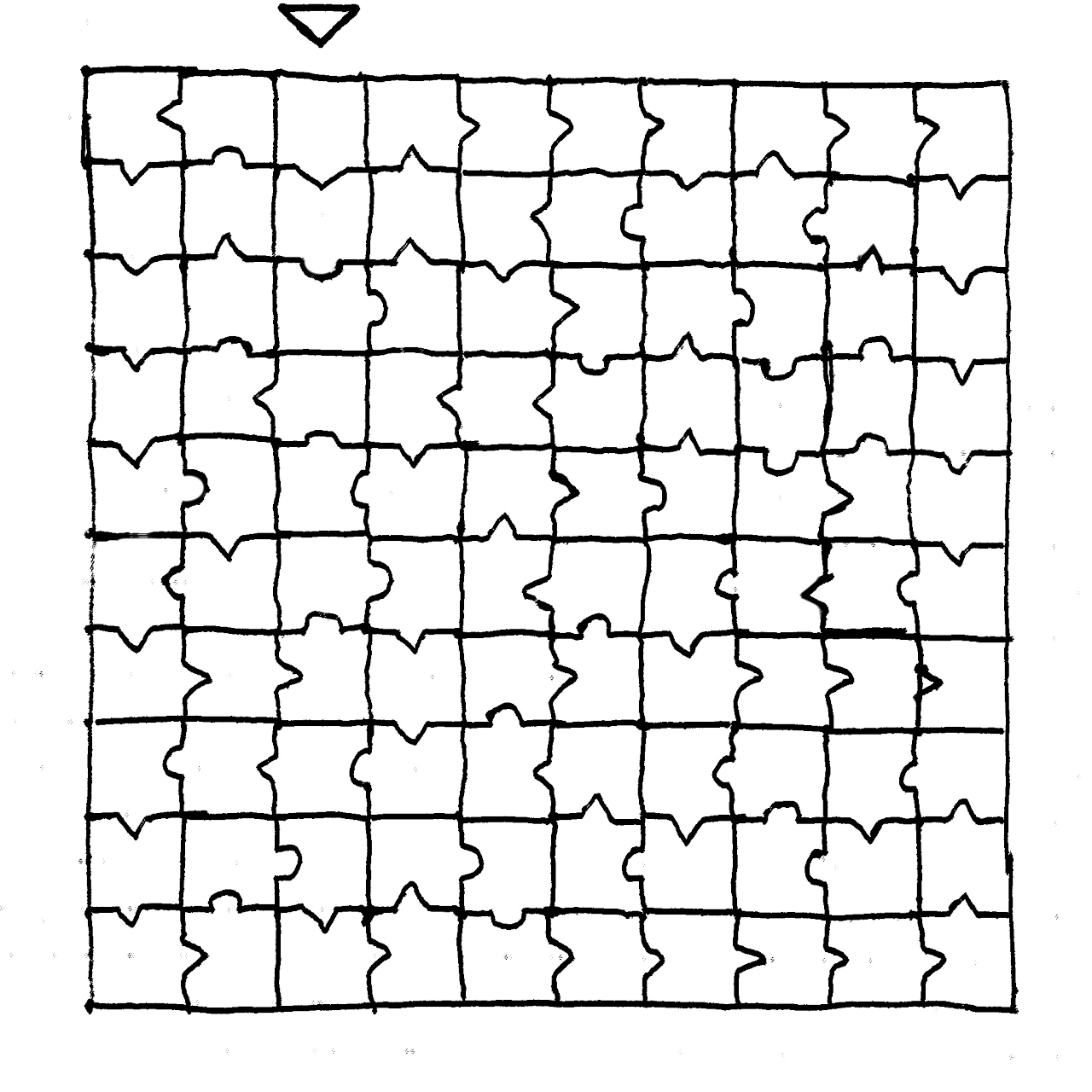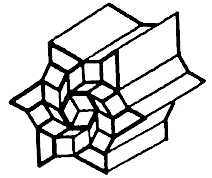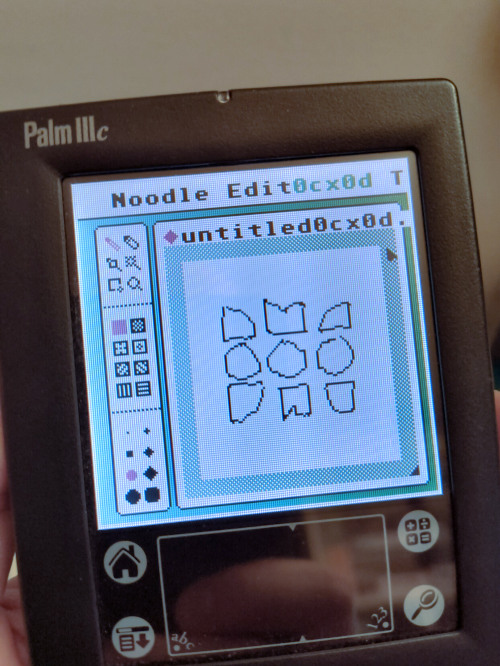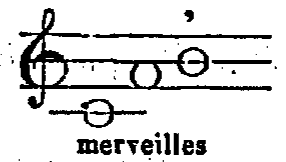Originally, the term Merveilles came from a little online game, its chatroom which ran in parallel with the game, as the game itself didn't permit players to conventionally talk to each other, attracted not only its players but the players' friends, and even after the game had gone, people remained in the channel to talk about music, game design and development.

Merveilles is a community of artisan engineers.
Merveilles is a collective of forward-thinking individuals who strive to better each other and their surroundings through constant creation and play. This community project is aimed at the establishment of new ways of speaking, seeing and organizing. A warm welcome to any like-minded people who feel these ideals resonate with them.
We're trying to build a community that welcomes multidisciplinarity, with somewhat high standards of discourse, focusing on the topics of experimental art, music & code. We ask of our members to consider the impact of their works on the environment, and to optimize toward living more sustainably.
Maybe it's a movement, I'm not sure. It might be that we all grew up with similar influences, yet it might not; but when we see each other, we know.
Events
During the first weekend of 2020, Merveilles hosted the Hyperjam, an interactive art jam designed to learn the Hypercard software and its programming language hypertalk.
Fediverse
Merveilles currently lives on the fediverse. The key trait of a software system which is federated is that the servers are controlled by independent, sovereign entities, and that they exist together under a common web of communication protocols and social agreements.
This occupies a sort of middle ground between the centralized architecture and the decentralized architecture. Federation enjoys the advantages of both, and few of the drawbacks.~
Solutioning for technological resilience, by Wiley Wiggins
Technology-centric subcultures have splintered and transformed radically since the 1960's when University-born radical researchers synthesized with the funding-rich military industrial complex, creating an unstable cocktail of new ideas. The consumer-computing boom of the 1980's led to the techno-utopianism of the 1990's, and ultimately the monkey’s-paw ironic wish fulfillment of the present day- a media landscape that seems to be both the realization and cruel distortion of utopian ideals of “free information”. The breathless venture-capital-powered silicon valley pursuit of untapped markets created a new path of class mobility– private sector software development. As more and more bright young people devoted themselves to this discipline, new technological subcultures were born out of dissatisfaction with the systems these tech workers found themselves serving under. These subcultures are not monolithic, but tribal. They manifest online and are colored by both the ideas of software development as a practice and the class consciousness and values of the various cultures these individuals came from.
The Merveilles Sensibility, from the French word for “Marvels”, is an associated visual design aesthetic, worldview, and collection of production techniques loosely connected to the Merveilles online community. This community exists as an instance of Mastodon (an open-source, federated and noncommercial microblogging platform reminiscent of Twitter) and as a webring of personal sites hosted over http or distributed via the DAT protocol. The community was founded by Devine Lu Linvega and Rekka Bellum, two artists and technologists who live a nomadic existence on a houseboat and have adapted their lives to the special requirements, producing games and software under the name Hundred Rabbits.

Merveilles is associated with, but distinct from sensibilities like ”Solarpunk”, “Cyberpunk” or “Junkpunk” in that it is practical rather than speculative. Merveilles is distinct from intersecting hacker culture in that it asserts that quality of life is tied to an aesthetic enjoyment of it, and in its decidedly leftist politics and ecological concerns. It carries strong, repeated motifs in fashion, industrial design, and user-interface design that are slick, minimalist, and concerned with values like cost, durability, maintenance, power consumption, and efficiency.
The Merveilles sensibility carries notions of optimizing for productivity that seem to have osmosed from mainstream software development culture, but have been redirected in the Merveilles weltanshauung to be used for personal productivity- divorced from commerce, and an assertion that individuals should create their own personally tailored tools to serve their own objectives and values. Merveilles Software is open-sourced and often distributed for free or suggested donations. The sensibility eschews commercial platforms and services whenever possible, viewing them as unreliable and opaque. Computer hardware favors cheap, low power modular devices running open operating systems. There is a tendency towards salvaging older computer equipment and avoiding electronics waste, as well as preparing for a world where the electronics distribution chain breaks down (see the associated CollapseOS project).

Our future must involve repurposing and creating new things from what we already have (instead of 20th century “destroy it all and build something completely different” modernism)(Flynn)
Hundredrabbits incorporates this idea by targeting hardware up to twenty years old in the software that they produce in order to, “encourage recyclism and discourage the consumption of fashionable electronics”. Merveilles seems aligned with the ideals of Solarpunk while internally expecting the world of Cyberpunk, it is neither a utopian or dystopian vision, but a way of straddling both contingencies.

The Merveilles visual aesthetic restricts color palettes to black and white, vector or pixel art, with at most a single accent color (usually a sea-foam aqua). Industrial design is minimalist, geometric black-forged metals, natural wood. Cared-for antique tools are included among plain utility objects and ad hoc modular electronics. The sensibility connects to the past- it resurrects older hardware and software platforms and aesthetics and reconnects them to the present. Programming new art tools for vintage hardware and software is a common exercise. Livecoding is a defining art practice in the Merveilles sensibility, and exemplified in software projects like Orca, Hydra and Supercollider- open programming platforms where code is written and altered while it continues to run, creating music and live visuals algorithmically.

Creating art and software in a command-line environment informs much of the minimalistic Mervailles aesthetic- monospace terminal fonts are the rule in interfaces, which, while functionally complex, are kept as visually minimal and single-purpose as possible. Experiments with vector art can become ornate and baroque in contrast, and are informed by op-art and digital typography.
Two aspects of the Merveilles sensibility that interest me most are the livecoding art practice- essentially performative, improvisational programming for music and live motion graphics, and the cultural pushback against always-connected, power-hungry devices that are too sophisticated to repair, and become electronics waste. I'm also fascinated by the push decentralized networks and the ways that the sensibility runs counter to mainstream tech culture. It advocates self-improvement over self-enrichment. It places importance on community and focuses on making those communities resilient and independent of as many centralized services as possible, as opposed to the illusion of independence that can take the form of resource hoarding and distrust. I'm also interested in the strong push to create software as a sort of “personal information architecture” rather than necessarily as commercial products for wider use. While there are certainly many commercially available products that fit within the Merveilles aesthetic, the usage and maintenance of these sorts of items runs counter to mainstream consumer culture. Preoccupation with the “well-made object” is not a radically new notion in terms of design, but in a larger philosophy of optimizing lifestyles for less income and the creation of less waste, the preoccupation transcends a sense of luxury.

As many of the adherents to this are skilled in software development methodologies, a large part of the Merveilles sensibility is the creation of personal, noncommercial software tools. Many visions of technological progress anticipate the existence of ubiquitous high-speed networks and plentiful, cheap power. I would suggest that for every localized instance of ‘techno-utopia', a desert of extraction is created. For technically skilled bourgeoise who are forced to compete at high levels in STEM fields in order to live in these urban areas, some outliers will continue to become alienated and take the technical skills and methodologies they learn to power and data deserts, not to digitally gentrify them, but to adapt their own lives to their requirements.

The Euro-Asian social influences of the Merveilles sensibility favor a focus on communities as a structure of resilience, with art and ethics as a common cultural bond. Rekka and Devine's nomadic life on a houseboat is an excellent case study in what that might look like as communities increasingly exist online instead of in a single location. It's a novel sign of our times that two people living a nomadic life in international waters can also be directly influential in a tight-knit social group that offers mutual aid and is generative enough to have wider cultural influence.




19V05— Hallow Mixtape Release19M10— Merveilles Meetup, Undisclosed Island18X04— Merveilles Meetup, Seattle16W13— Merveilles Meetup, Seattle14G10— Merveilles HyperCard Jam13Y05— Merveilles Meetup, Berlin13L09— Merveilles Meetup, Amsterdam13G00— Merveilles Meetup, Tokyo12Y11— Mastodon Instance Inauguration11Z03— Merveilles Meetup, Auckland10R01— Merveilles Meetup, San Francisco
incoming: elmet brae collected works old cities merveilles portable identity lifestyle faqs events 2024 2022 goals